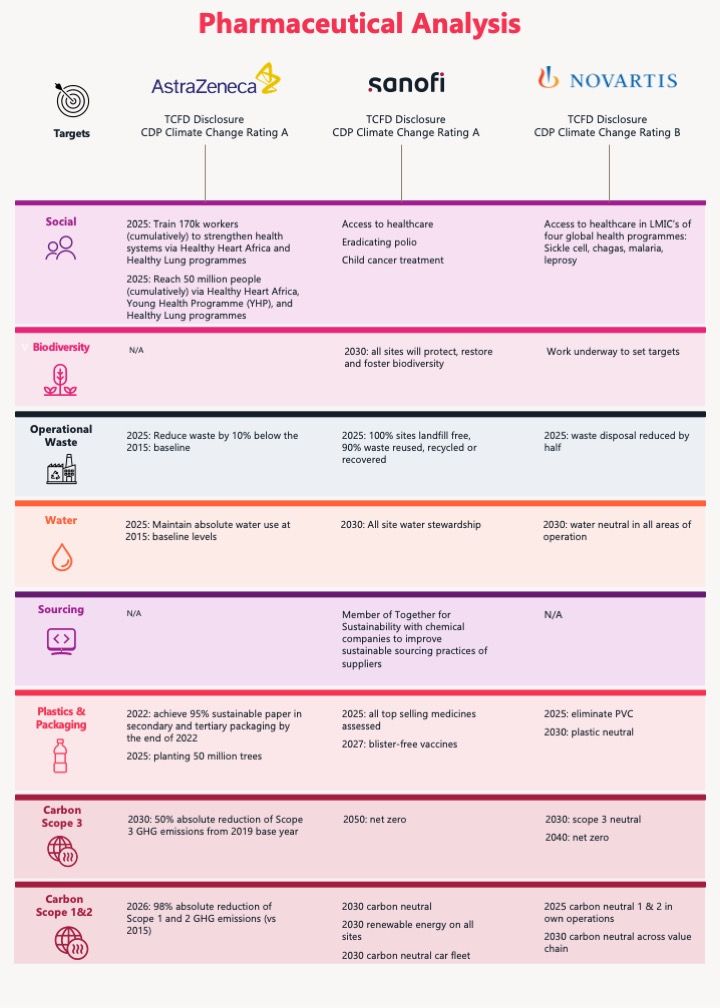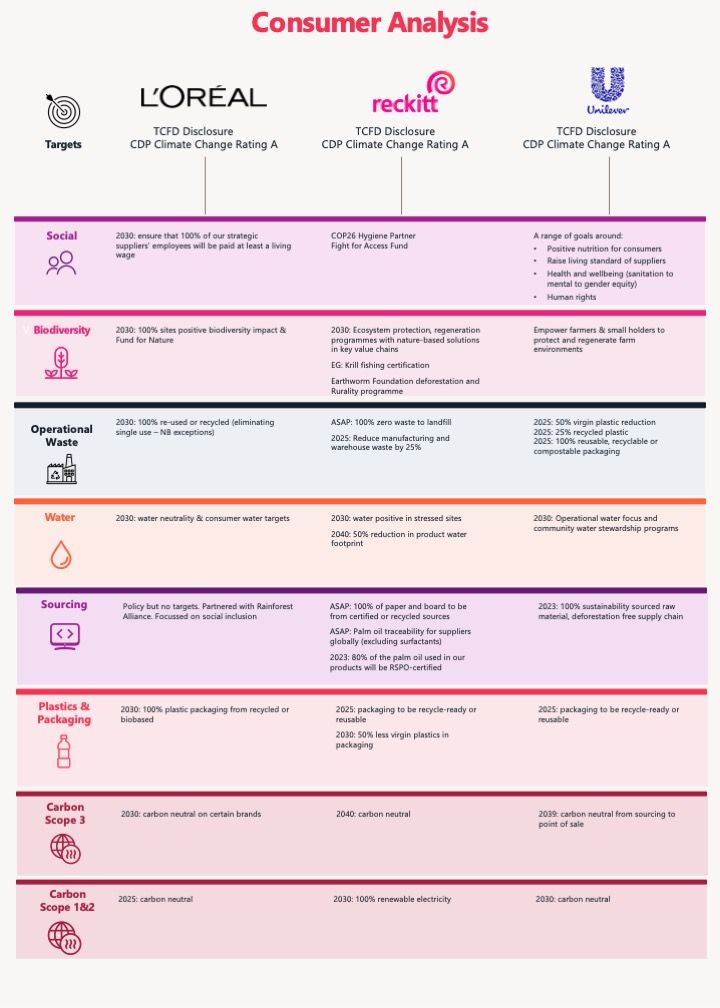What Pharma Can Learn From the Consumer Market When It Comes to ESG
The pharma industry is beginning to perform better with environmental, social, and governance (ESG).
Dr. Pamela Walker, Ph.D.

Consistently scoring well below its consumer counterparts on all elements of environmental, social, and governance (ESG), pharma has built a reputation for avoiding the topic. However, 2022 has marked a change on this front. Pharma companies have woken up to the critical role ESG strategy plays within their businesses and for their shareholders. This past quarter, we have seen a flood of pharma companies announce their ESG strategies and showcase ESG reporting early milestones. Years behind leading consumer rivals, pharma now has ESG on its agenda—in a big way.
What’s the difference?
Jen Nixon

Consumer businesses are firmly in the ESG era, from sustainable packaging and supply chains, to impact innovations, to social programs, to diversity across all levels of management (in progress). For many, although ESG reporting may have its own spotlight, ESG is not a standalone strategy; it is embedded within overall business planning. By answering consumer demands, these corporations have addressed targets across the ESG board and are visibly beating the ESG drum at a growing pace. Such momentum has created a group effect of collaboration for the better, supporting the vision of a meaningful and sustainable world.
In the pharma sector, we’ve seen another side of the ESG coin. Like all businesses, there are the looming macro expectations on pharma companies, yet unlike the consumer space, they lack the constant customer pressure for change. This, coupled with the highly regulated landscape and decades of reputational firefighting, has provided the ideal vacuum to seal away pharma from mainstream ESG strategies.

Compared to consumer businesses, pharma is in a different space. Fundamentally, the companies do not directly interact with consumers and their offer is not one of luxury, nice to have, or preference—it is about health and saving lives. Some markets are a monopoly, others an oligopoly, with complex B-2-B-2-C commercial models. Doctors and payers continuously rank efficacy and safety as key drivers for product choice (not patient preference). Even today, consumers and patients are effectively left out of the brand decision-making process altogether.
This pharma market dynamic means that the pull we see in the consumer space simply isn’t there in pharma. If a patient is worried about end-of-life decisions, acute crises, or chronic burdensome conditions, they are not often pressuring drug manufacturers for sustainable packaging, stronger carbon reduction targets, or more equitable governance.
On the agenda?
The question being asked in recent years was: “Is ESG on the pharma leadership agenda?” Given transparency in terms of relevant datapoints, few facts pointed to a “yes.” Even in the more agile biotech space, we’ve seen in 2021 that 70% do not have ESG references in public disclosures.
That said, three key factors have now shifted in the sector, influencing an emerging focus of pharma on ESG:
- Improved perceptions of the industry as a result of the incredible response to COVID-19 across the ecosystem (pushing price-fixing and opioid scandals into the past) have created the necessary air space for a new agenda item.
- COVID worked to highlight the interconnectedness of planetary health and human health.
- The investor community has prioritized ESG and is putting pressure on current pharma leaders’ agendas and reporting expectations. This dynamic has emerged because of new datapoints showing effective strategies can improve business performance, employee recruitment, retention and engagement, customer loyalty, and reputation—as well as enable risk management and diversity across investors’ portfolios.
“ESG is becoming a very important force facing companies in the coming years, and there is more and more evidence that investors are paying attention to ESG practices,” says Oksana Stowe, early stage investor, ESG industry thought leader, and host of the podcast ESG in VC. “For example, Deliveroo lost a few key investors at the IPO given its poor ESG ratings, so this will prevail. Pharma as an industry does have its own nuances, but it will also have to start paying attention to these issues if [companies] are to retain market share and positive sentiment from investors.”

How does pharma compare today?
Using publicly available information, including companies’ own reporting, communications, and sciencebasedtargets.org (as of May 2022), we explored how top ESG-performing pharma companies (AstraZeneca, Sanofi, and Novartis) stacked up against their top consumer counterparts (L’Oréal, Reckitt, and Unilever). In terms of targets set across the group, the consumer companies have outlined broader strategies and are more ambitious in nearly every area of ESG: sourcing, water, waste, plastics, and packaging. Pharma, however, had a big win in terms of setting more ambitious targets for carbon reduction.
Overall, pharma targets don’t have an all-encompassing ESG strategy, with obvious gaps around a holistic social strategy and goal that improves the livelihoods of their employees, communities, and wider society. Other areas such as sourcing or biodiversity do not yet appear to be considered or available, and other areas are not as ambitious as their consumer peers.
Comparatively, the consumer leaders have set pioneering targets across all areas of ESG, and for some they are on their second or third iteration of targets, which have become steadily more progressive. Across the sector, they are working together, collaborating on initiatives across plastics and packaging, sustainable sourcing, climate, and health to ensure they can achieve these targets.
How can pharma improve?
Digging deeper into this assessment of the market, comparing large pharma to consumer and consumer health businesses, highlights some fascinating opportunities:
Environmental—Consumer businesses have identified and highlighted the interconnectedness of environmental and social issues. Doing one alone or few in isolation will not lead to a healthier planet or people. Therefore, companies have set targets across all environmental areas they impact, ensuring they follow the latest science and nature-based targets. Pharma can adopt this same approach.
Societal—Being more directly linked to the consumer in the value chain, consumer companies have for many years worked closely with their customers and communities to improve livelihoods. By setting an overarching social goal, this ensures that all their initiatives can directly help to achieve this. While working with small parts of the community or partnering with charities is hugely beneficial to those groups, if pharma companies set a holistic goal, this will ensure that more people across the world are reached.
Governance—Regulations and requirements are traditionally more stringent for pharma companies, however, by bringing in strong governance practices into an ESG strategy, it will ensure that the good of your people, partners, suppliers, and everyone in your supply and value chains are being valued equally and treated fairly.
Key takeaways
Learning from consumer companies is more tangible than ever before, and there is the drive and swell of momentum to do so. Pharma will need to keep in mind the lead time needed (as it always does) to implement supply chain changes, organizational and reporting adjustments, and the work needed to embed ESG across the corporate culture. Meaningful movement from a governance standpoint is critically needed to facilitate an environment where ESG is prioritized and integrated into business practice.
In order to make transitions to ESG strategy adoption faster and more effective, following are five key considerations for pharma. This checklist of questions is built with our analysis in mind to open up opportunity areas for pharma to embrace ESG in a tangible way for its customers, employees, stakeholders, and balance sheets.
- How can innovation be leveraged to unlock ESG opportunity?
- How can an ESG culture facilitate improved business operations?
- How can you build ESG capability and engage your stakeholders?
- How can ESG wins underpin a reputational profile?
- How can pharma companies work together to drive greater systemic change?
Authors
Pamela Walker, PhD, is a partner, and Jen Nixon is a principal at Gate One.
Cell and Gene Therapy Check-in 2024
January 18th 2024Fran Gregory, VP of Emerging Therapies, Cardinal Health discusses her career, how both CAR-T therapies and personalization have been gaining momentum and what kind of progress we expect to see from them, some of the biggest hurdles facing their section of the industry, the importance of patient advocacy and so much more.
Applying Porter’s Five Forces to Portfolio Management in Pharmaceutical R&D: A Strategic Roadmap
March 17th 2025The increasing costs and complexity of R&D in the pharmaceutical industry have necessitated the adoption of strategic portfolio management to optimize resource allocation and enhance competitive advantage.